Formula 1 News: 2024 Spanish GP at Barcelona Preview
Spain’s grand prix can trace its roots back to 1913 and after spells in Barcelona’s district Pedralbes and Montjuic Park, Madrid’s Jarama, and Jerez’s eponymous circuit, the purpose-built Circuit de Barcelona-Catalunya assumed permanent host duties in 1991.
This year’s race is the 54th edition of the Spanish Grand Prix, the 34th to be held at the current venue. It first appeared on the calendar in 1951, becoming a permanent fixture in 1986. The Montmelo track is the fifth to host this Grand Prix: previously it was held at two street circuits in the capital of Catalunya, twice at Pedralbes and four times at Montjuic.
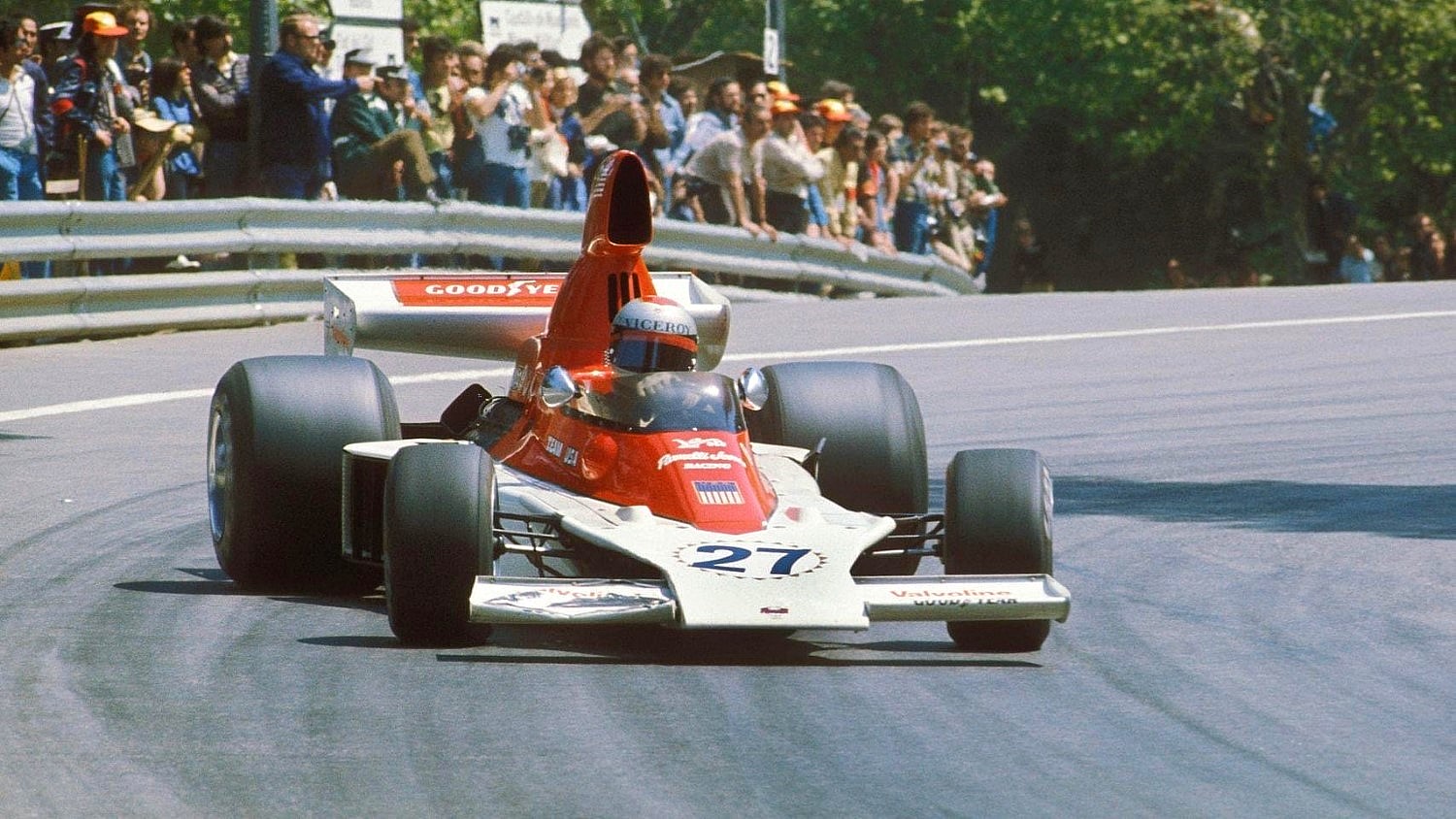
It was also run at the permanent venues of Jarama on the outskirts of Madrid (nine times) and at Jerez de la Frontera in Andalusia (five times). Spain has also hosted a further seven rounds of the world championship, all of them going by the name of the European Grand Prix: in 1994 and 1997 at Jerez and from 2008 to 2012 on the Valencia street circuit.
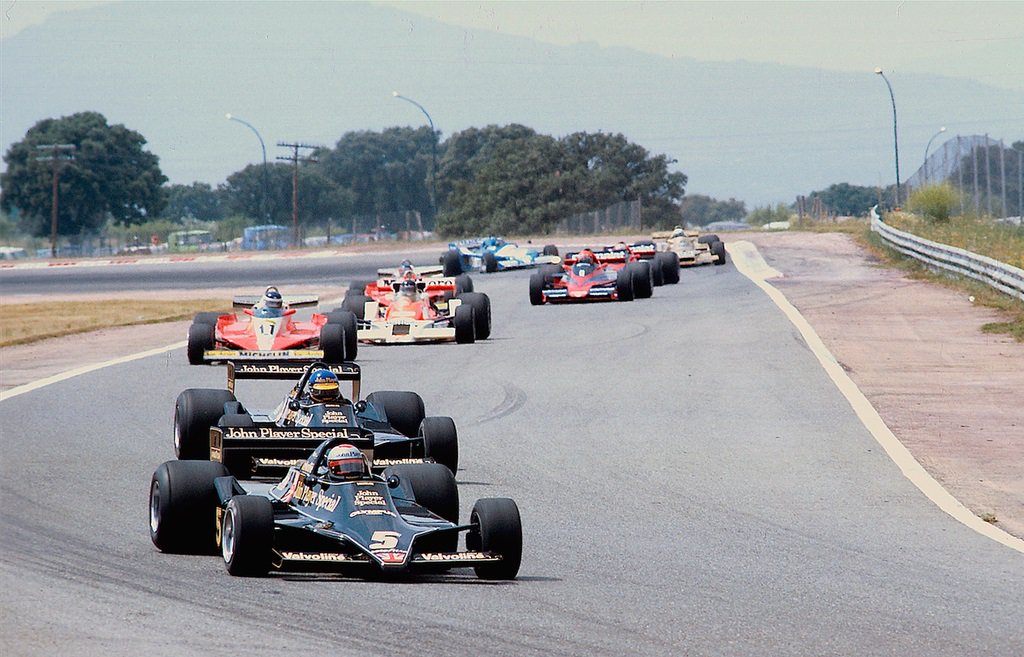
Michael Schumacher and Lewis Hamilton are the most successful drivers at the Spanish Grand Prix, with six wins apiece, while a win in the 1994 European Grand Prix makes Schumacher the most successful when it comes to F1 races on Spanish soil. The German also heads the table for pole positions on 7, fastest race laps (7) and podium finishes (12). Of the constructors, Ferrari leads the way with 12 wins, 14 pole positions and 38 podium finishes.
The 4.6km circuit acts as a firm test of a car’s aerodynamic prowess and tire usage, with a plethora of long-radius corners and quick direction changes. Teams and drivers also have extensive knowledge of the Circuit de Barcelona-Catalunya through its many years as a host venue for pre-season testing,
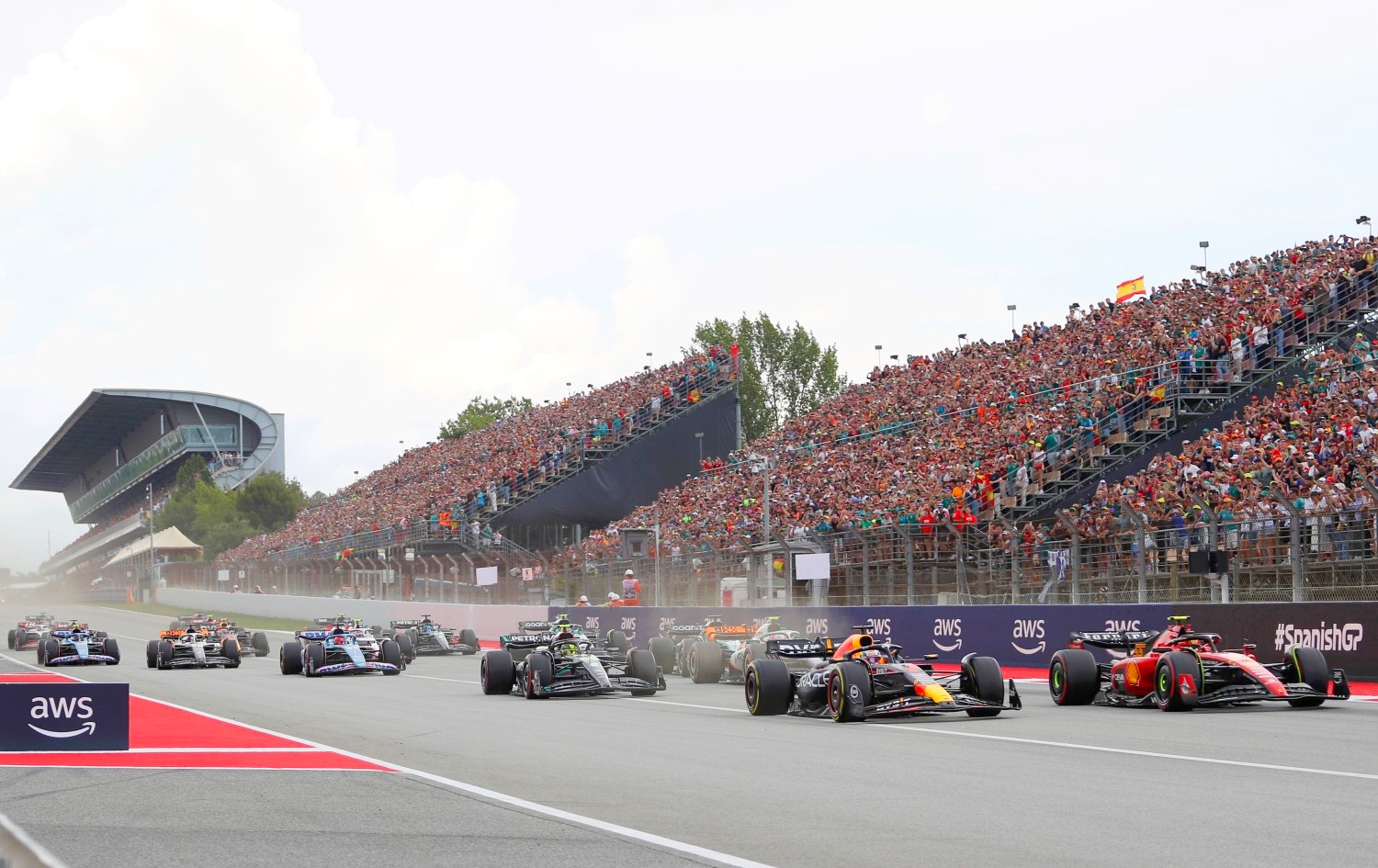
The track is one of the most complete of any circuit in the world, not just those on the Formula 1 calendar, in terms of the challenges it presents. Apart from its straights, it boasts every possible type of corner, with some of them, such as turn 3 and the combination of 13 and 14 which lead onto the main straight, taken at very high speeds. The lateral forces exerted on the tires, especially on the left hand side of the car are particularly high, partly because nine of the 14 turns are to the right.
For many years, this circuit was home to winter testing for the teams and also marked the start of the European part of the season, which also signified the arrival of the first major upgrades of the year. Recently, changes to pre-season testing and the calendar mean this is no longer the case, but Barcelona is still a probing test, met with trepidation by all the teams because – and in this case the cliché is true – if a car is competitive here, it should be quick at all types of track.
In 2023, the original configuration, used since 1991 when this track first appeared on the Formula 1 calendar, was reinstated. It was changed in 2007 with the insertion of a chicane before the final corner, with the aim of creating another overtaking opportunity, but this did not materialize. In fact, the removal of the chicane, combined with the aerodynamic configuration of the current cars has seen an increase in overtaking here so that last year this track went from being midrange in terms of passing opportunities to one of the top four.
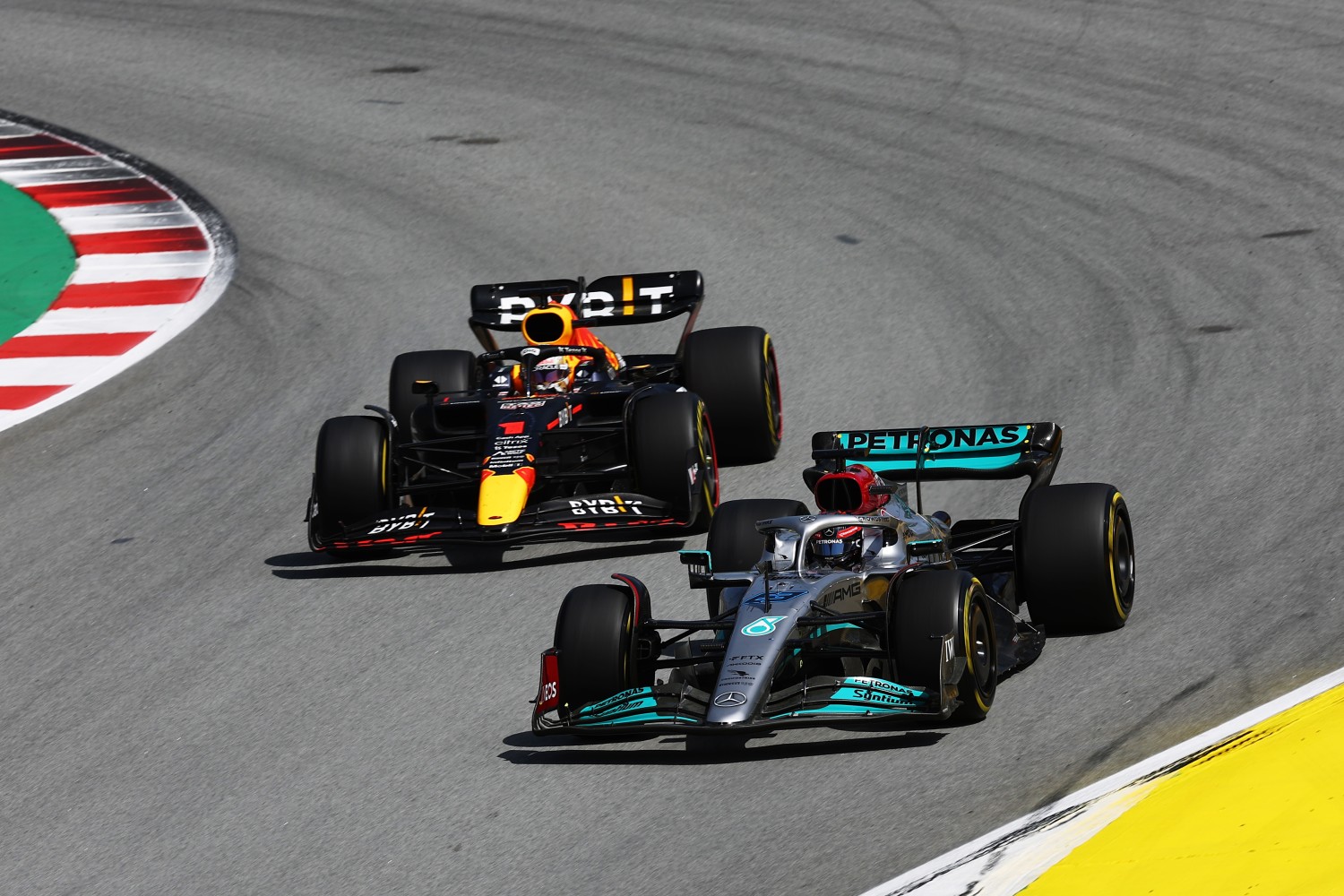
This year’s race takes place three weeks later than in 2023 so it could be hotter and that could add another factor to tire management. This thermal issue could put the C3 at a disadvantage, whereas last year that compound had been quite competitive even in the race, chosen by 16 of the 20 drivers for the first stint.
In terms of strategy, a two-stop should be the quickest option with all compounds possibly coming into play. If degradation is higher, then even a three-stop might be feasible, especially as last year’s race proved that overtaking is easier than in the past.
Another consideration at the Barcelona-Catalunya Circuit is the importance of qualifying. In no fewer than 24 races here, the pole sitter has gone on to be first past the checkered flag and adding to the importance of this statistic is that on four other occasions the driver who was quickest in qualifying retired from the race.
The weather forecast is for typically warm early-June conditions but with a risk of showers during the weekend. We should get all the testing done in the dry but then the rain may start to dictate the program from Saturday afternoon onwards.

Fact File: Spanish Grand Prix
- The Circuit de Barcelona-Catalunya is an ideal track for testing an F1 car, as it has a wide range of corner types and speeds, plus some long straights. Slow-speed corners like Turns 5 and 10 focus on mechanical grip, but high-speed sections such as Turns 3 and 9 test a car’s aerodynamic grip.
- Sector three is incredibly important and drivers can find a lot of lap time here in the slow corners. It can be rare for a driver to set three purple sectors at the circuit, because maximizing grip and being faster in sector one will overheat the tyres for the crucial third sector.
- The chicane in the final sector of the lap was removed for the 2023 race, reverting back to the previous track layout for the final two corners.
- Most of the track’s low-speed turns are left-handers and most of the right-handers are taken at high speeds. So slightly different car set-ups can be used on the left and right-hand sides, and that track characteristic also means the left tires wear out quicker, while the right tires experience lower temperatures.
- 24 of the 33 races that have taken place at the Circuit de Barcelona-Catalunya have been won from pole.
- As current F1 cars get faster and induce more downforce, the tire manufacturer has developed a new spec that will make the tires more resistant. They will come into use at the British Grand Prix. For Barcelona, teams will be given two extra sets per car to be used during FP1 and FP2.
- Barcelona has one of the longest runs from pole position to the braking zone at the first corner, measuring 613 meters.
- The wind at the Circuit de Barcelona-Catalunya often changes during the day. Usually, there is a tailwind on the main straight in the morning, which produces a headwind into the high-speed turns. This helps provide better car stability. It then tends to rotate in the opposite direction in the afternoon making balance more challenging.
- Turn 5 is a unique corner, because drivers approach it differently depending on the session. The camber of the road drops at the apex, which unloads the inside-front tire and increases the risk of lockups. Drivers will take a tighter line in Qualifying as it shortens the distance, but on a race stint, lockups can cause vibrations and damage the tire. So they take a wider line to keep the load off the inside-front and reduce the potential of a lockup.
- By adding another quick right hander and making T14 faster than before, the new layout now also adds further duty on the left-hand tires. There remain only three left-hand corners now and those are low speed, thus the loading on the tires is extremely asymmetrical.
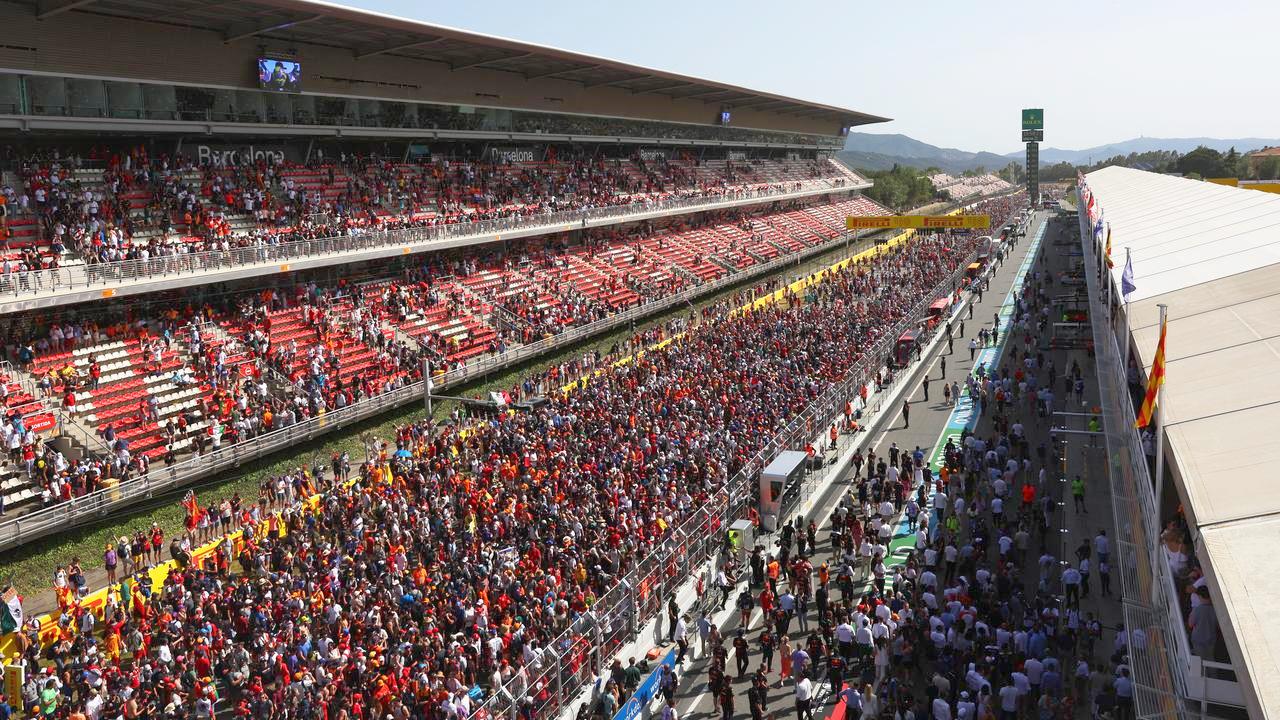
What to Expect
- Race interruptions: Race interruptions are rare in Barcelona. In the hybrid era (since 2014) there have been just four Safety Car deployments, and just two Virtual Safety Car deployments since the system was introduced. As for retirements, there is an average of just three per race, which means plenty of caution-free running.
- Overtaking: Not easy, but there are opportunities given high tire degradation, which means there should be pace differences between cars on different strategies. The long DRS zone on the main straight and the opening turns are where drivers will attempt to make their moves, or down the DRS straight on the run to Turn 10.
- Strategy: Expect a mix of strategies given high tire degradation. Adding to the unknowns, teams aren’t as familiar with the circuit given it’s got a new layout in Sector Three, and the circuit didn’t hold pre-season testing in 2023. There is also a new specification Pirelli slick tire, planned for introduction at Silverstone, to test in Friday practice.
A word from last year’s winner – Max Verstappen
“We are back to the European races for a while now and I have been with the Team at the factory this week preparing for the Spanish Grand Prix, being the first race of a busy triple header.
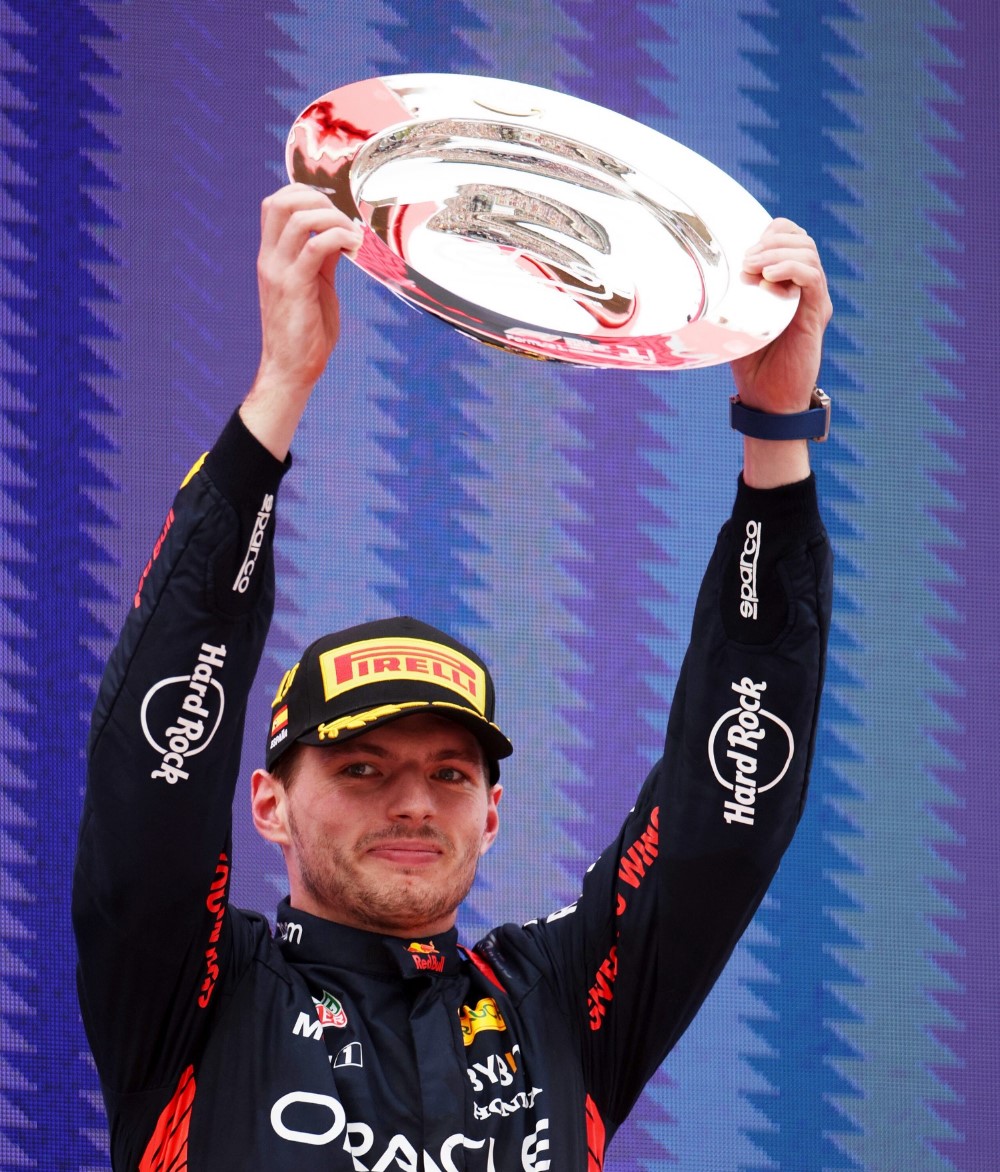
Related Article: F1: Verstappen defeats Hamilton to win 2023 Spanish GP
“Barcelona will be the first race where I will be debuting my new orange helmet. As a tribute to my fans and all of their support, they are actually featured on helmet and I think the final design looks really cool and detailed.
“I have great memories from the circuit, especially winning my first Formula One race there. It has a good mix of high and low-speed corners and we have historically driven well there so hopefully we can maximize the performance of the car this weekend. We are aiming to keep the momentum going from Canada, so we are looking forward to racing this weekend and hopefully have some good weather!”
Fernando Alonso on racing at his home track
What is it like to be racing in front of your home fans?
“The Spanish Grand Prix has always been a special race for me, and it’s always nice to come home and embrace the amazing atmosphere.
“This will be my 21st Spanish Grand Prix and I will feel as proud as I did at my first home race when I go round the track. The Spanish fans always come out in full force and provide us with the additional motivation to do well.
“It’s always nice to see them at the Fan Forum as well – so many come along to show their support for the team.”
Can you tell us about some of your favorite memories at the circuit?
“Over the years there have been some exciting battles on track and one that stands out is my win in 2006. It was my first victory at my home race, and I will always remember the fan’s reactions, it was very special.
“There is always a different kind of energy at the Spanish Grand Prix for me – the fans are so passionate. Another good memory of mine was the blue wave in 2005 and 2006 which is now becoming a green wave.”
What does it take to do well at the Circuit de Barcelona-Catalunya?
“It’s a circuit all the drivers and teams know well so everyone has a lot of experience there. Tyre degradation is a key factor at this track which means the pit-stop strategy plays a big part in the race.
“Overtaking is not easy either, so making sure the car is set-up right ahead of Saturday will be important as qualifying position is crucial to having a good Sunday.”
Last year saw us race on the new layout for the first time, do you think that it has made a difference?
“The removal of the chicane helped to make the last sector more flowing, and it has made tyre management even more important throughout the race. I think it’s quite fun to drive through it again at high-speed.”
We left Montreal with a double points finish; do you think that result can act as motivation for the team moving forwards?
“The team are working flat out to bring new parts to every race and hopefully we can improve our competitiveness.
“The Spanish Grand Prix marks the start of a triple-header so we need to work together as a team to make sure we are able to extract the maximum we can from each weekend.
“We will also need to support each other during the next three races, as triple-headers can be a physical and mental challenge for everyone in the team, not just the drivers.”
Unlocking the Lap

The lap begins with a short run to the opening two corners, a right-left hop uphill that can be difficult to take when 20 cars are jostling for position at the start of the race. It’s a case of hanging on into Turn Three, where the bravest will try to pass around the outside of this high-speed uphill run. Turn Four sets drivers up for the challenging downhill Turn Five.
Soon, it’s flat out through Turn Nine and down the DRS straight towards Turn 10. This is the most demanding corner on the brakes and an area where a late dive down the inside of a rival can prove tempting in an attempt to gain a position.
A short squeeze of the throttle and Turn 11 is up next, immediately leading to the medium-speed right-hander of Turn 12. Turns 13 and 14 now conclude a lap at Circuit de Barcelona-Catalunya, as the final right-hander and chicane have been replaced with this pair of flat-out corners that lead onto the long main straight.
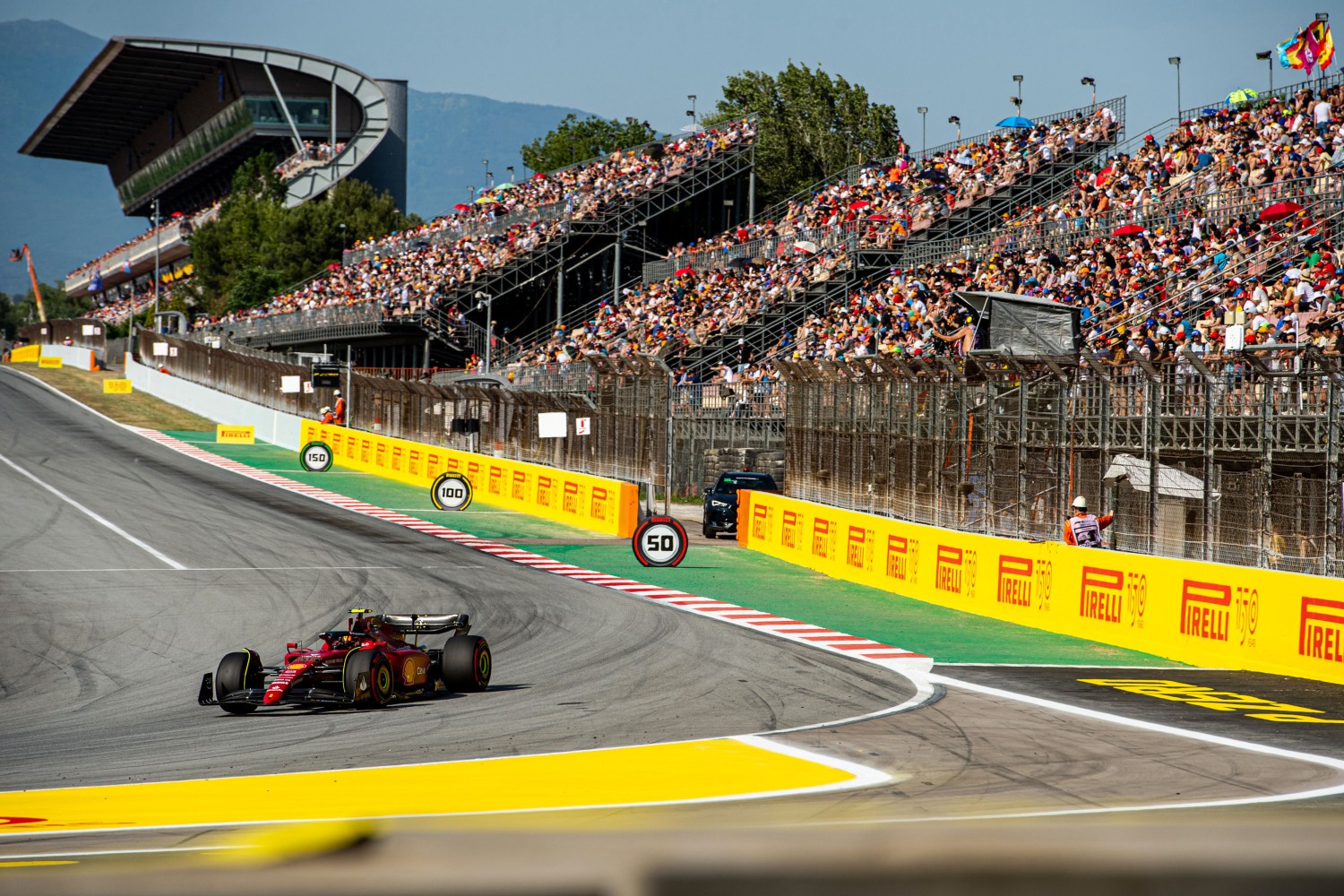
The combination of track changes, additional Pirelli tire testing and no pre-season test at Barcelona this year means its use as a ‘reference’ track is slightly diminished, but Barcelona will still be a useful benchmark.
For one thing, it’s the first permanent track we’ve raced at in 2023 since Bahrain, so is a better indicator for the upcoming European races than the temporary street tracks we’ve grown accustomed to in recent rounds.
Its position as the first European race of the year, as well as a popular test track, was a historic reason that many teams brought their first major updates to Spain. Teams and drivers have all run thousands of laps over years of visiting the track, so it’s as close to a known environment as you can get in the world of F1 racetracks.
A relatively warm and predictable climate means plenty of uninterrupted running, while there are numerous high- and medium- corners to test every aspect of the car’s performance – although the final trio of low-speed turns has been replaced by a high-speed pair of corners leading onto the main straight.
Weather Forecast
The Spanish Grand Prix hasn’t been hit by rain since 1996 but there’s always the chance.
According to Weather.com, we will be having a dry race weekend in Spain. Temperatures look to be above 20 Celsius for all of the weekend, and the chance of rain is very little for all three days.
n Friday, the chance of rain is 20%, with the maximum temperature predicted at 26 degrees. Saturday brings the lowest chance of rain at only 9%, with temperatures possibly rising up to 27 degrees. Both Friday and Saturday are predicted to be clear skies above the track.
Sunday may bring some clouds, but temperatures are still predicted to be in the high twenties, with the maximum estimated at 27 degrees again. The chance of rain on Sunday is 18%.
Pirelli Tires for the Spanish GP

The teams will have the C1 as P Zero White hard, C2 as P Zero Yellow medium, and C3 as P Zero Red soft at their disposal in Barcelona.
